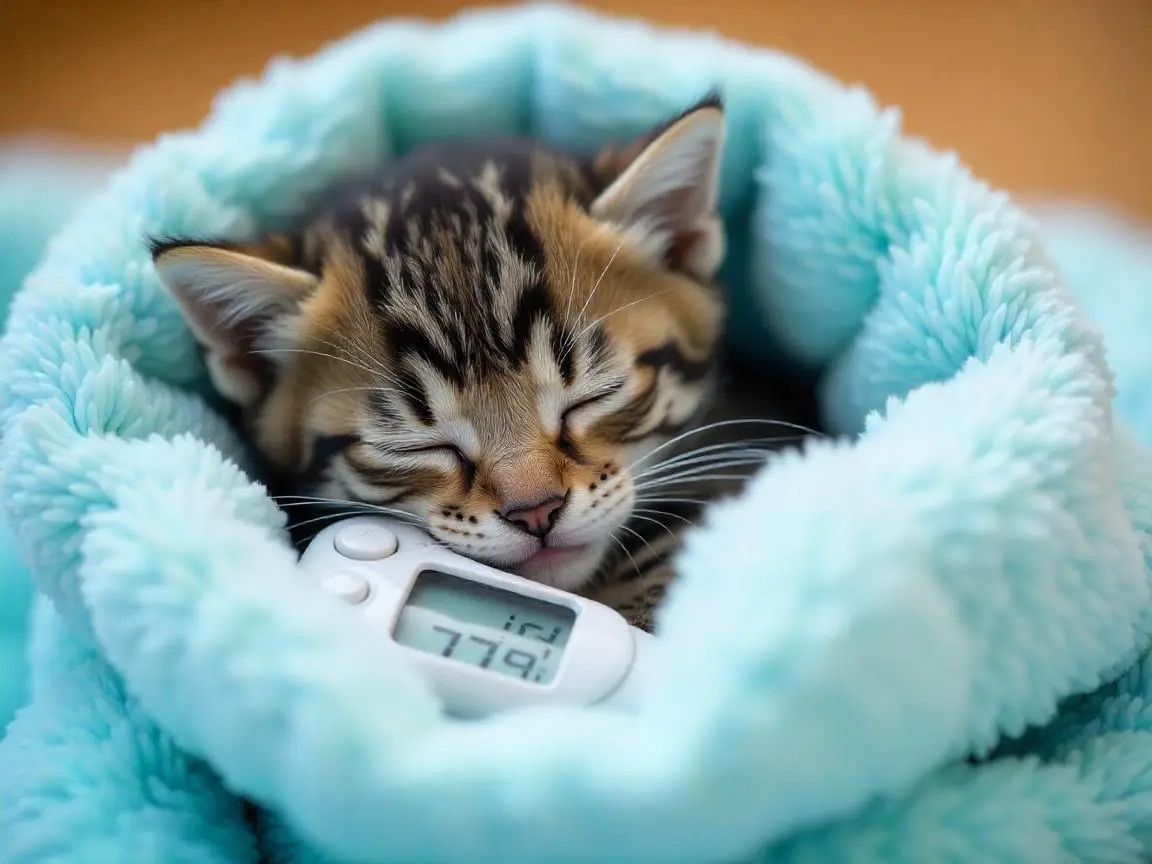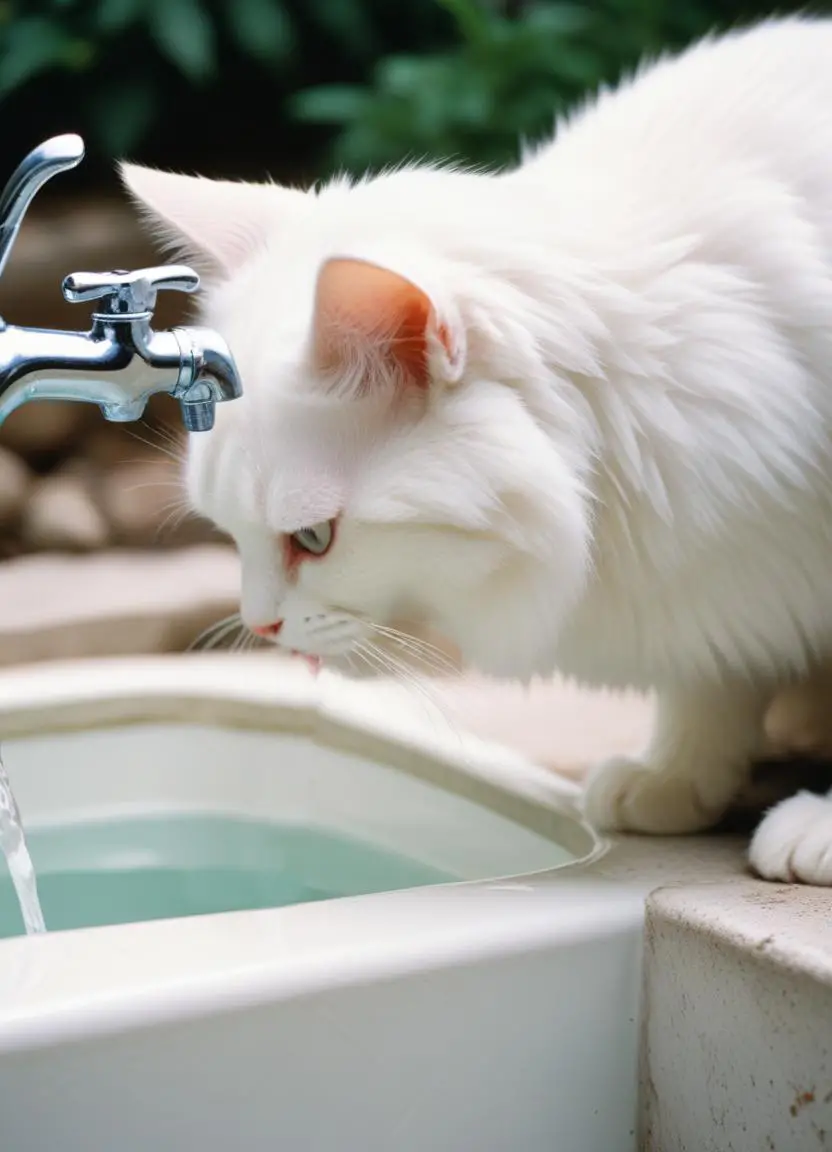Seeing your cat under the weather is never a good feeling. As a loving cat parent, it’s important to recognize when your furry friend isn’t acting like their usual self. Whether it’s a mild tummy issue, a sudden drop in appetite, or just lying around more than usual—some of these signs can be handled with gentle care at home. In many cases, your kitty might bounce back with just a little extra attention. But if things don’t improve or your cat seems to be getting worse, don’t wait—reach out to your vet right away. It’s always better to be safe when it comes to your pet’s health.
Give Your Cat Comfort and the Right Kind of Care
When your cat isn’t feeling well, they need more than just medicine—they need your love, patience, and a calm environment to heal. A few simple steps can make a big difference in helping them feel safe and supported.
Start by setting up a quiet, cozy spot where your cat can rest without being disturbed. Choose a warm room away from household noise, other pets, and busy foot traffic. A soft bed and a sense of privacy can help them relax. It’s also a good idea to place a clean litter box nearby, but not too close to their bed—cats appreciate a bit of space between where they rest and where they go to the bathroom.
If your cat feels safer in enclosed spaces, try setting up a small area with blankets or a carrier partially covered with a towel. You can also add a low-level heat source like a heating pad or warm water bottle (always on the lowest setting and well-covered) to help keep them cozy.
Keep Your Cat Indoors
Letting a sick cat roam outdoors is not a good idea. When your cat stays inside, you can watch them closely, notice any changes in their behavior, and offer help when needed. Being indoors also protects them from other animals, harsh weather, or stress that might slow down their recovery.
Offer Easy-to-Eat, Nutritious Meals
Food plays a huge role in recovery. Unless your vet suggests a specific diet, try sticking with your cat’s usual meals. If they’re not eating much, offer the food by hand or mix their kibble with a little water or low-sodium broth to make a soft, soup-like mixture.
Sometimes, a bit of tuna or a favorite treat can encourage eating. You can also warm their food slightly—many cats find warm meals more appetizing. Just make sure it’s not too hot!
If possible, choose cat food that meets the standards of the Association of American Feed Control Officials (AAFCO), as these are usually high in quality and well-balanced. And try not to introduce totally new foods during this time, since unfamiliar tastes might put them off eating altogether.
Help Your Cat Stay Hydrated
Cats naturally don’t drink a lot of water, and when they’re not feeling well, their water intake might drop even more. But staying hydrated is super important for recovery, so here’s how you can encourage your sick kitty to drink more.
Start by offering clean, fresh water in a bowl that’s easy to reach. You can even place a few water bowls in different spots around the house—especially near your cat’s resting area—so they don’t have to walk far when they feel weak.
If your cat enjoys running water, a pet water fountain might be a great investment. Many cats are drawn to flowing water, and it might tempt them to drink more. Some cats even like sipping from a dripping tap, but tap water can have chemicals that aren’t ideal, especially when they’re sick. If possible, offer bottled or filtered water instead.
You can also try giving your cat a little low-sodium tuna water or plain chicken broth. Just make sure it’s fresh—don’t leave it out too long, and toss any leftovers that haven’t been touched within a few hours.
Give Lots of Gentle Love
While rest is key to recovery, your kitty may also need your comforting presence. Most cats love a calm cuddle or some gentle petting, especially when they’re feeling unwell. Try sitting quietly near them and softly stroking their fur when they’re awake—it can be very soothing.
Avoid disturbing your cat while they’re sleeping, and try not to leave them alone for long stretches. Just being nearby can help them feel more secure and cared for.
A cotton ball bath can also work wonders. Lightly wiping your cat with a warm, damp cotton ball (especially around the face and paws) can mimic the feeling of being groomed by another cat. It’s a gentle way to offer comfort and warmth while helping them stay clean.
Help With Gentle Grooming
Sick cats often stop grooming themselves because they’re too tired or uncomfortable. Giving your cat a soft brushing each day can help keep their fur in good condition and also shows them love and support.
Use a soft-bristled brush and move slowly. While you’re brushing, check their skin for any signs of irritation or changes. Grooming is not just about keeping their coat tidy—it’s also a great bonding moment.
Follow the Right Medication Plan
If your vet has prescribed medication, it’s very important to follow their instructions closely. Give the medicine exactly as directed, even if your cat starts to seem better. Stopping treatment too early could cause a setback or make things worse.
Never give your cat any human medicine—not even over-the-counter pain relievers—as these can be extremely dangerous for pets. Also, avoid sharing medications between cats, even if they have similar symptoms. Each cat is different, and the wrong medicine could do more harm than good.
How to Give Your Cat a Tablet Without a Battle
Giving medicine to a sick cat can be tricky, especially if they’re not in the mood to cooperate (and let’s be honest, they rarely are!). Many cats don’t like having anything forced into their mouths, so it’s no surprise they might resist. But with a calm approach and a little know-how, you can make the process smoother for both of you.
Here’s a step-by-step guide to help you out:
-
Start with Calm Energy
Before you even touch the tablet, take a moment to sit with your cat and talk to them in a soothing voice. Gently stroke their fur to help them feel relaxed and safe. -
Find a Secure Spot
You can either sit on the floor with your cat between your legs or place them on a stable surface like a table. Just make sure they feel snug and supported, not trapped. -
Hold the Tablet Ready
Have the medicine in one hand, ready to go. With your other hand, gently tilt your cat’s head upward, so their nose is pointing slightly toward the ceiling. -
Open the Mouth Gently
Using your thumb and forefinger, press gently on the sides of their jaw near the back. This should get their mouth to open just enough. -
Drop the Tablet Toward the Back
Quickly and gently place the pill as far back on their tongue as you can. The closer it is to the throat, the better the chance they’ll swallow it without spitting it back out. -
Encourage Swallowing
Close your cat’s mouth and softly rub their throat in a downward motion. This helps trigger a natural swallowing reflex. You can also squirt a tiny bit of water into the side of their mouth using a dropper—just a little—to make it easier. -
Double-Check
If your cat seems to have swallowed the pill, gently peek inside their mouth or under their tongue to make sure it’s not hiding in there. Cats are sneaky like that! -
If It Didn’t Work, Try Again
If they spit it out, don’t panic. Take a short break, reset, and try again calmly. Getting frustrated will only make things harder for both of you. -
Give a Reward
Once the pill is in and swallowed, praise your cat, give them a treat, or offer their favorite cuddle session. This helps build a more positive connection with medicine time for the future.
How to Help a Vomiting Cat
Vomiting can sometimes be a minor issue, but if it comes with other worrying symptoms, it might point to a more serious problem—like an upset digestive system or even something more complex. Before you try anything at home, call your vet to explain what’s happening. They can guide you on whether it’s safe to care for your cat at home or if a check-up is needed.
If your vet says it’s okay to manage it at home, here’s what you can do:
-
Offer clean drinking water right away to prevent dehydration, but hold off on food for 24 to 48 hours to give your cat’s tummy a break.
-
Watch carefully during this time—if your cat keeps vomiting even after drinking water, you’ll need to call the vet again.
-
Once the vomiting stops, introduce small, frequent meals—3 to 6 times a day. Stick to a bland, easy-to-digest diet like plain boiled chicken or fish (no seasoning, no skin, no bones).
-
If your cat seems to handle these meals well, slowly start mixing in a small amount of their regular food over a few days.
-
If your cat’s stomach reacts badly to the food mixture, pause and go back to the bland diet for another day or two before trying again.
With a bit of patience, your cat’s tummy troubles should settle down. Once they’ve gone a few days without vomiting, you can gradually return to their normal feeding routine.
When It’s Time to Call the Vet
While some issues can be managed at home, there are certain warning signs that mean your cat needs professional medical attention right away.
Here’s when you should definitely take your cat to the vet:
-
Your cat is crying, hiding, or seems in pain
-
Sudden changes in litter box habits, like going outside the box or straining to pee/poop
-
Refusing to eat for more than a day
-
Repeated vomiting or dry heaving
-
Extreme tiredness or weakness
-
Breathing changes—panting, shallow breaths, or coughing
-
Dragging back legs (could be a sign of a serious condition)
-
New lumps or bumps that weren’t there before
-
Unusual discharge from eyes or nose
-
Any visible wounds or signs of trauma, especially after a fall or fight
-
Signs of infection, like swelling, pus, or a feverish body
When in doubt, don’t wait—getting help early can make all the difference in your cat’s recovery.
The Bottom Line
Just like people, cats can come down with something from time to time. With a little extra love and the right care, many minor issues can be handled safely at home. Watching your cat closely—making sure they’re resting well, eating enough, and staying hydrated—can go a long way in helping them feel better.
But always trust your instincts. If you notice unusual behavior, signs of pain, or symptoms that just don’t seem right, it’s best not to wait. A quick visit to the vet can rule out anything serious and give you peace of mind.
Catching health problems early means your furry friend can get the treatment they need faster—and that means more happy, healthy days ahead with you by their side.







